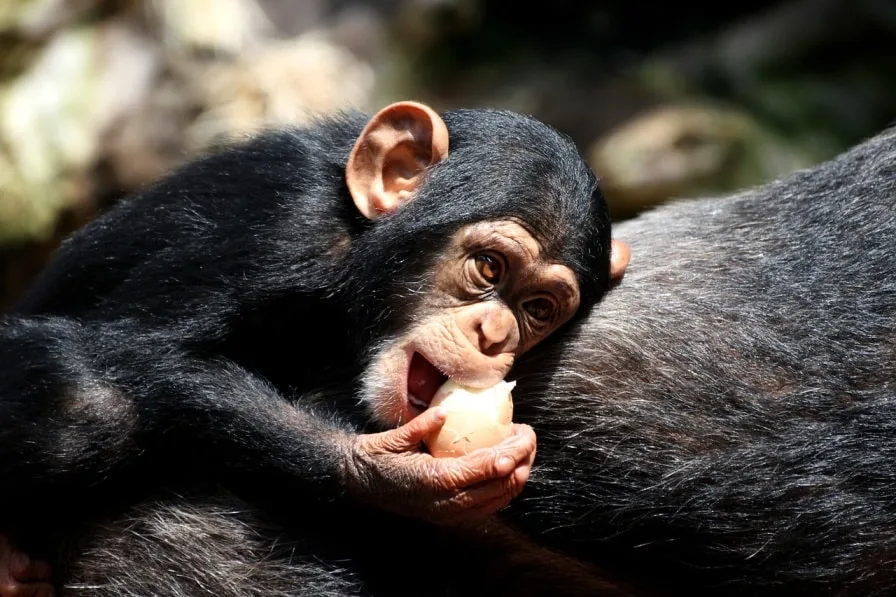Looking for Where to See Chimpanzees?
Have you ever wanted to know mankind’s closest relatives in the animal kingdom? This blog will glimpse the incredible lives of Chimpanzees and what we can do to ensure that they are protected now and in the future.
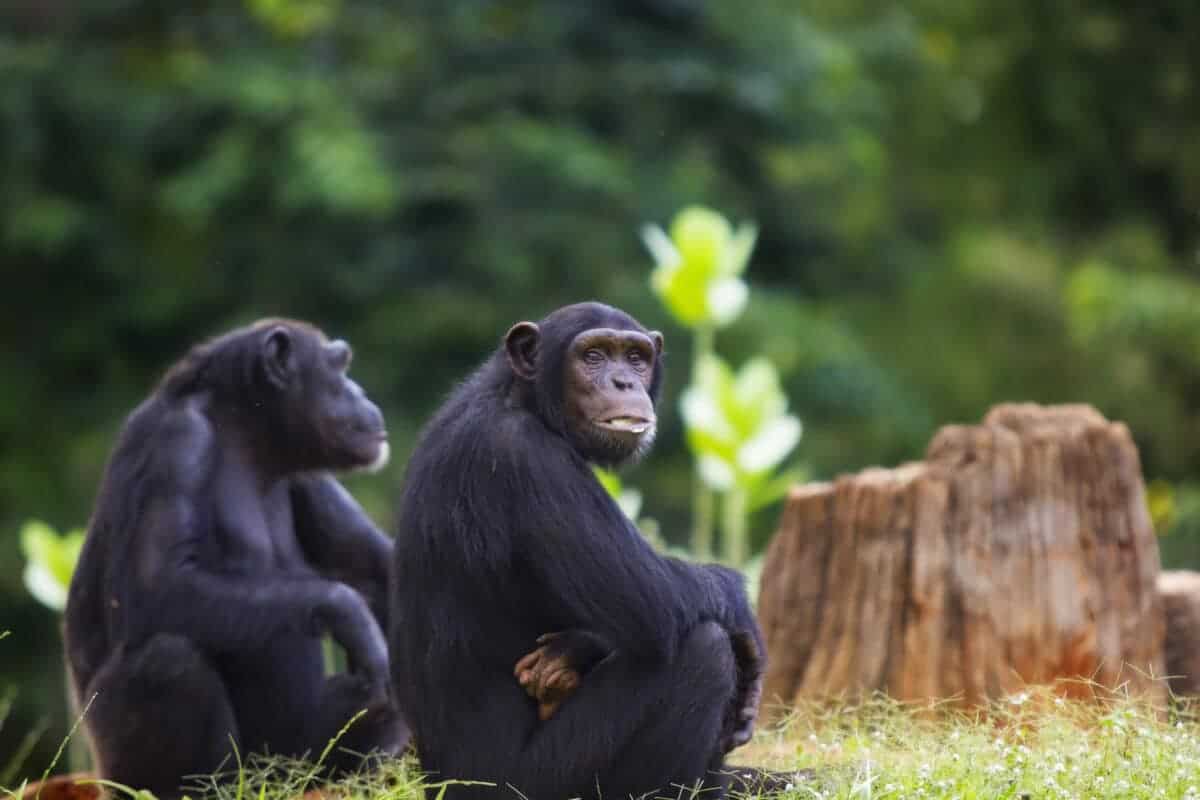
Chimpanzees, the incredible great apes, inhabit vast regions of Central and West Africa. What’s truly fascinating is their close kinship to humans, sharing a whopping 98.7 percent of our genetic makeup. It’s like we’re distant cousins! Remarkably, both humans and chimps are believed to have descended from a common ancestor who roamed the Earth around seven to thirteen million years ago. Our family tree holds some captivating secrets!
Habitat and diet
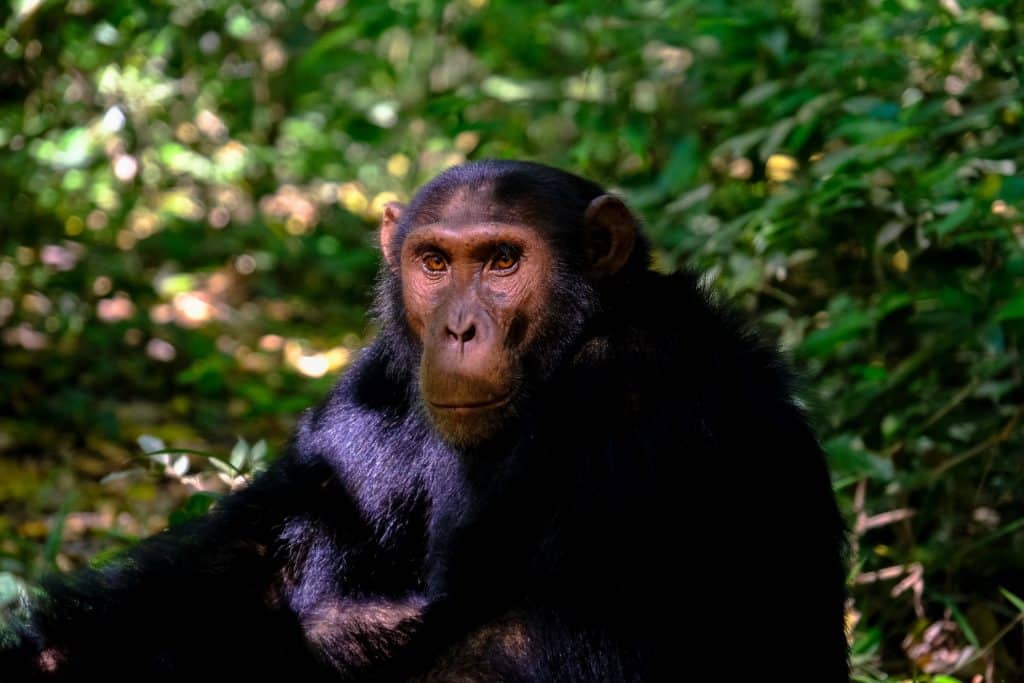
Location and Sanctuaries
On our way to Where to See Chimpanzees, we investigated many options.
This map shares the points where you can find chimpanzees in the wild and also pinpoints three unique sanctuaries which believe in rescue and rehabilitation where seeing them in another setting is possible.
Situated in Uganda is the Ngamba Chimpanzee Sanctuary, which is incredibly active in the rescue and conservation of this precious species. If you want to visit them whilst in Uganda, contact them. If you want to donate, there is also an option for that, and all proceeds contribute directly to the welfare of these fantastic animals.
Next, in Sierra Leone, is an unbelievable Chimpanzee Sanctuary named Tacugama Chimpanzee Sanctuary. It has similar goals to Ngamba. However, they further offer a chance for guests to stay in their Eco-lodges. Famous individuals, including Jane Goodall, have volunteered and worked at this world-renowned Sanctuary. You will have a fantastic experience with a view and interacting with these animals there. Donations and Volunteering are also options at this Sanctuary should you wish to get involved.
Lastly, the Chimp Eden Sanctuary in South Africa, in connection with the Jane Goodall Institute, does incredible work for the chimpanzees. Although these animals are not as close to their origin as possible, the conservation and rehabilitation of these animals are the priority of Chimp Eden. And animals that are suitable to be let into the wild are done so when the time is right.
Behavior and Social Needs
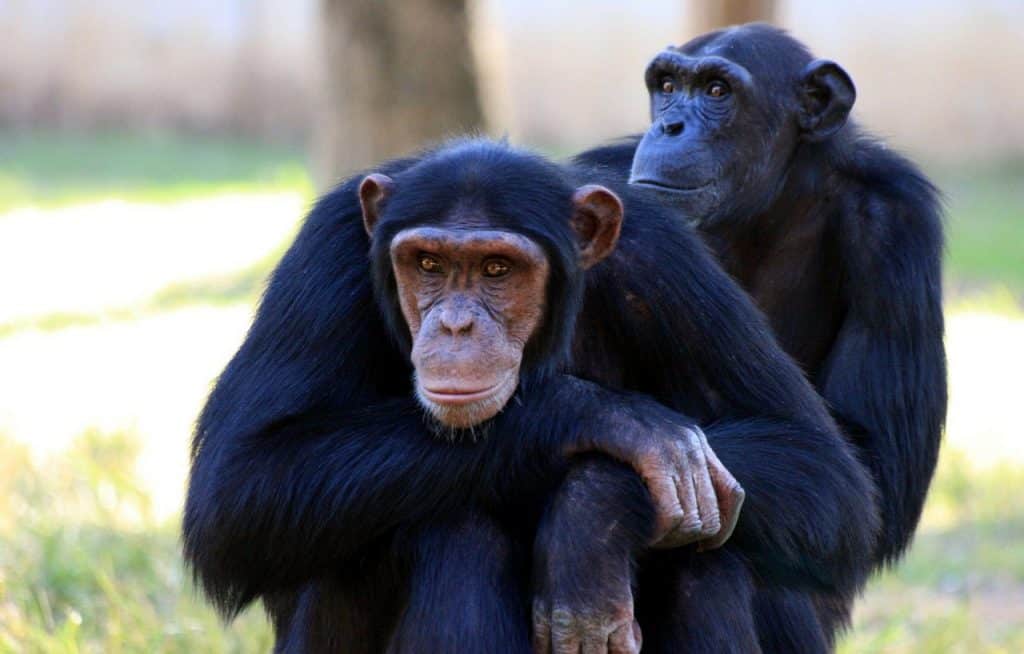
Chimpanzees boast an impressive adaptability when it comes to their diet and habitat, making them the most versatile among great apes. While many populations reside in lush tropical rainforests, they can also thrive in woodlands and grasslands across Central and Western Africa. Sleeping high in trees is their norm, with the sturdy Ugandan ironwood tree being their preferred choice, offering both stability and comfort. They fashion nests from leaves for warmth and a cozy resting place.
Chimpanzees are true culinary adventurers, exploring a wide-ranging menu. Their predominantly plant-based diet features an impressive array of over 300 food items, including fruits, berries, leaves, blossoms, seeds, bird eggs, chicks, and a plethora of insects. Sometimes, they even indulge in carrion, displaying their carnivorous side. Their hunting skills, employed individually or in groups, showcase cunning stalking and hunting tactics. Additionally, chimpanzees have been observed using specific plants for medicinal purposes, effectively treating ailments and expelling intestinal parasites.
Intriguingly, these adaptable creatures, while lacking swimming abilities, are not averse to wading in water. They do so to cool off in the heat or while procuring this precious resource, demonstrating their remarkable ability to confront various challenges.
Intelligence and communication
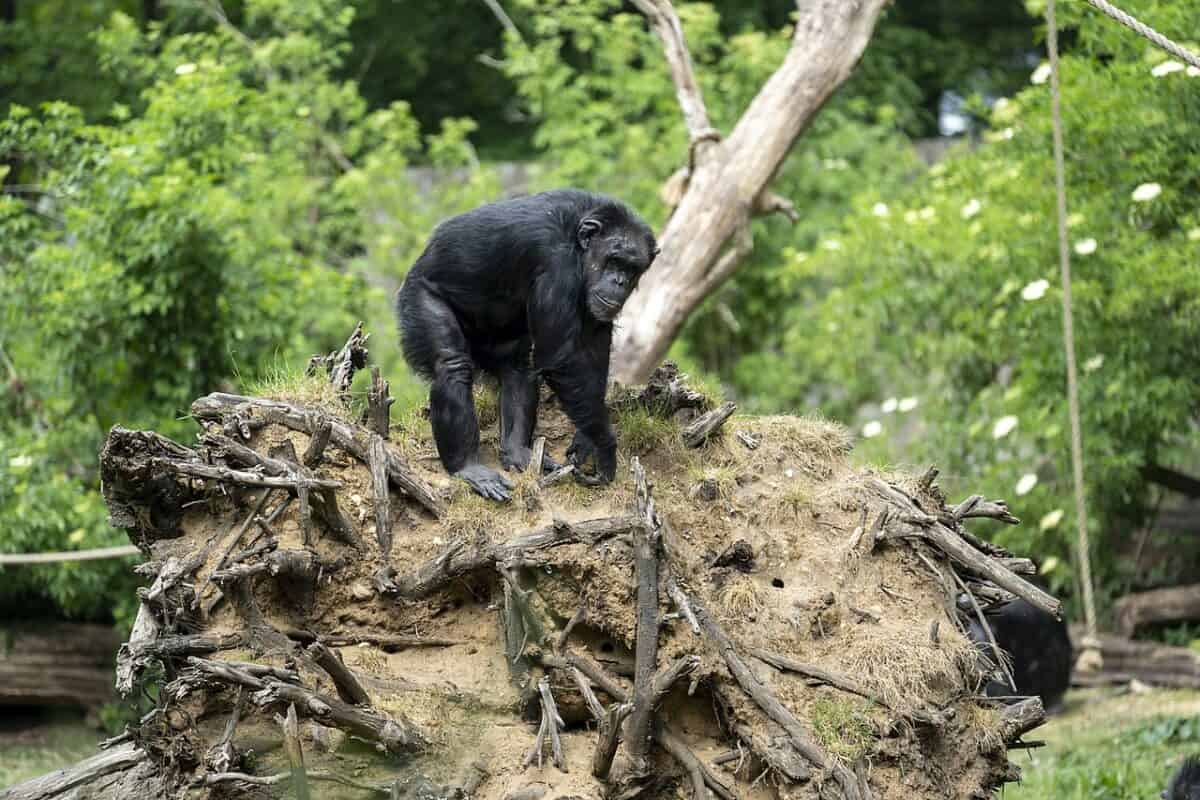
Chimpanzees exhibit remarkable cognitive abilities, successfully tackling numerous challenges set by humans, including trainers and researchers. They have been taught to communicate using sign language and other symbolic systems, involving tokens or pictorial symbols.
The interpretations of these linguistic experiments are widely debated. Some argue that chimpanzees haven’t truly grasped language, understanding ‘words’ merely as abstract symbols with combinable meanings. On the other hand, recent advancements in language training suggest that chimpanzees might indeed comprehend ‘words’ as abstract concepts applicable in new situations.
In their natural habitat, chimpanzees communicate through an extensive range of facial expressions, physical gestures, and vocal sounds like screams or grunts. Male chimpanzees often express excitement through upright postures, rhythmic movements, and a series of loud vocalizations.
For distant interactions, chimpanzees rely on louder signals, such as drumming on trees, while closer communication involves softer sounds and nuanced facial expressions. Their ‘play panting’ resembles human laughter, and their grins share similarities with human smiles, reflecting complex emotional expressions.
Tool use
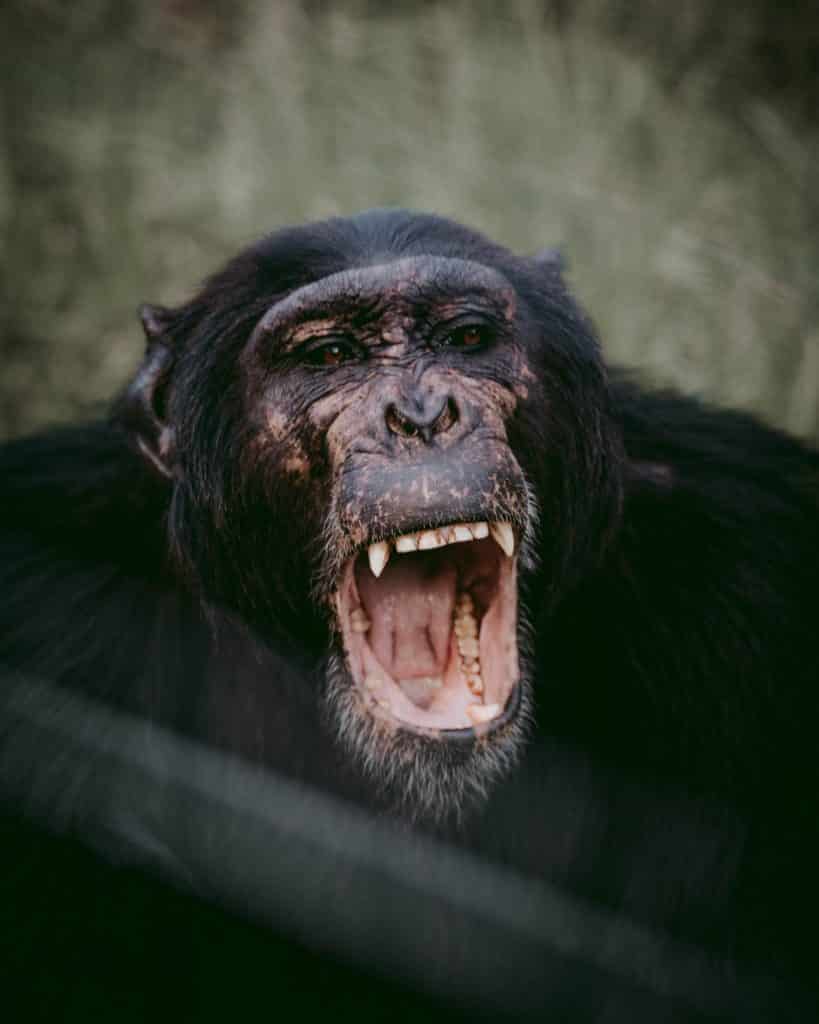
These highly intelligent primates are among the select species known for their tool usage—a behavior first documented by primatologist Jane Goodall in 1960. This revolutionary finding prompted archaeologist Louis Leakey to suggest a redefinition of ‘tool,’ ‘man,’ or to consider chimpanzees akin to humans.
Goodall noted that chimpanzees skillfully modify sticks for extracting insects from nests or for unearthing grubs from within logs. They utilize rocks to crack open nutritious nuts and repurpose leaves as sponges for absorbing drinkable water.
Furthermore, chimpanzees have the capacity to learn basic human sign language. This discovery has highlighted the profound commonalities between humans and these primates, reinforced by the significant DNA overlap we share with them.
Jane Goodall:
Jane Goodall’s groundbreaking research has significantly raised awareness about the plight of these vulnerable primates. Her profound bond with the chimpanzees captivated worldwide interest, paving the way for enhanced conservation efforts.
Her journey is not just motivational but truly captivating!
In 1960, a 26-year-old Jane Goodall left England for Tanzania to conduct groundbreaking research on wild chimpanzees. Equipped with only a notebook and binoculars, she ventured into the lives of these primates, uncovering their complex behaviors. Dr. Goodall’s enduring commitment, spanning nearly six decades, has not only spotlighted the urgency of safeguarding chimpanzees but also underscored the critical need for broader environmental and community conservation initiatives. Today, she is a global ambassador for wildlife and environmental preservation.
Upon her arrival in Gombe’s forest, the world knew little about chimpanzees. Goodall’s innovative method involved deep integration into their environment, recognizing them as beings with rich emotional lives and social connections. Her 1960 revelation that chimpanzees fashion and utilize tools transformed our comprehension of these animals and reshaped the narrative of human-animal interactions.
The Jane Goodall Institute, an international organization dedicated to conservation, continues Dr. Goodall’s legacy. The institute works to safeguard chimpanzees while fostering environmental stewardship. Their guiding principle is clear: “Everything is interconnected—each individual can effect change.”
Reproduction
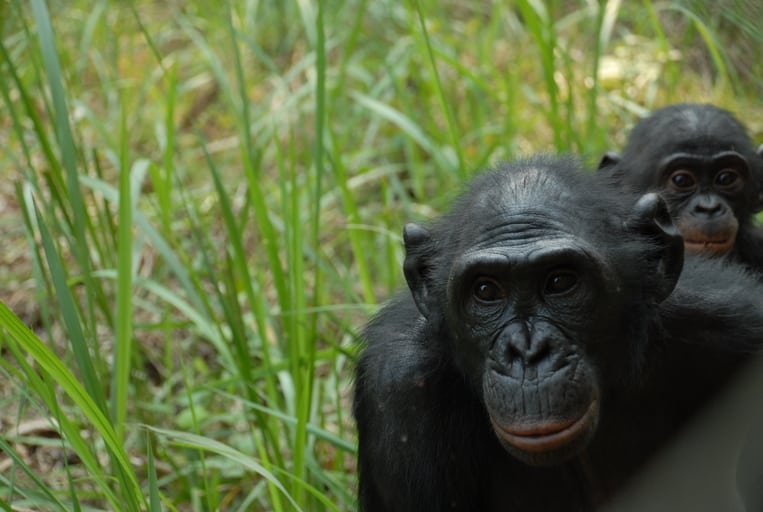
Female chimpanzees can give birth at any time of the year, following a gestation period of approximately eight months, typically giving birth to a single infant. These newborn chimps weigh around 1.8 kg (about 4 pounds), and they are almost entirely dependent on their mothers. They cling to their mother’s fur and ride on her back until they are weaned, which usually occurs between the ages of three and five.
In contrast, females reach reproductive age at 13, and they often raise only two offspring throughout their lifetime. On the other hand, males are not considered adults until they are nearly 15 years old.
In the wild, chimpanzees have an average lifespan of about 45 years, while in captivity, they tend to live longer, with an average lifespan of 58 years. However, there have been documented cases of older individuals. For instance, Cheetah, a chimpanzee known for appearing in the Tarzan movies of the 1930s and ’40s, was reported to have lived approximately 80 years.
Threats to survival
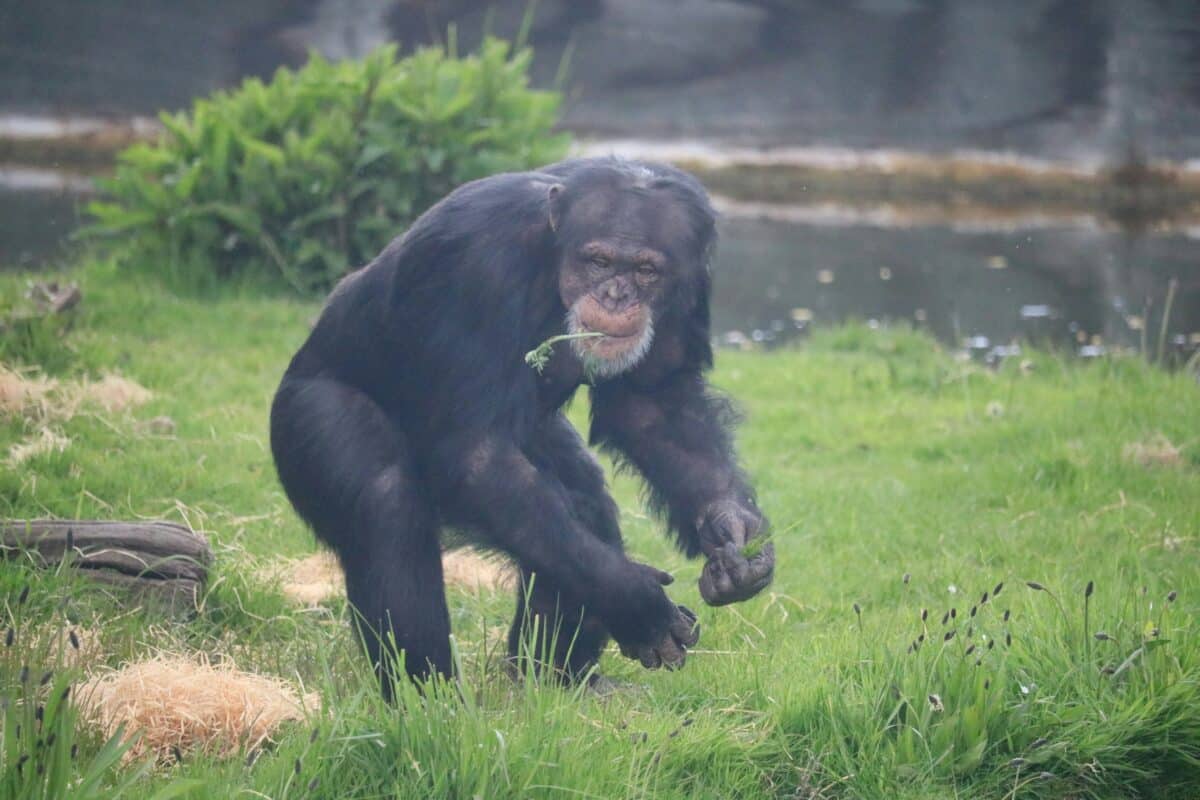
The IUCN has classified chimpanzees as an endangered species, with the expanding human population largely responsible. Human encroachment into chimpanzee habitats, for purposes such as agriculture, along with activities like logging, mining, and infrastructure development, is severely impacting and fragmenting their living spaces.
In Western Uganda, the diminishing habitats are causing increasing clashes between humans and chimpanzees. The reduction in their natural environment and food sources leads chimps to forage near human settlements. While they typically take fruits and accessible food, there have been incidents of chimps harming small children, leading to retaliatory actions by humans for protection.
Chimpanzees are also targeted by hunters for bushmeat, as they yield more meat compared to smaller animals. Additionally, there is a market for their young in the illegal pet trade. Chimpanzees are also vulnerable to diseases; notably, the Ebola virus has been a significant cause of mortality since the 1980s.
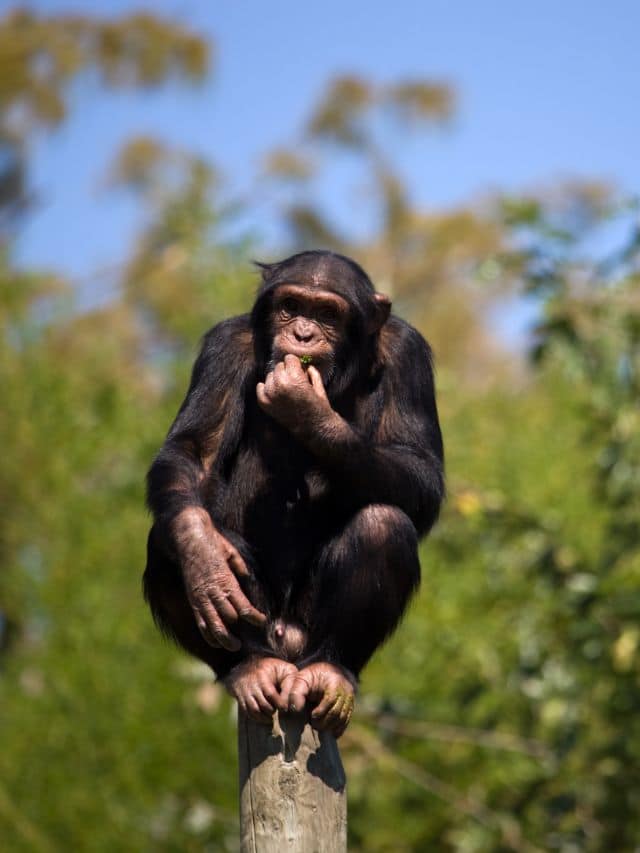
Chimpanzees benefit from various protective measures under both national and global legislation, such as the U.S. Endangered Species Act. Numerous parts of their habitats are also safeguarded as wildlife sanctuaries or reserves. Conservation groups are continually striving to enlarge these safe zones and halt illicit wildlife poaching and capture.
However, the crux of ensuring chimpanzees’ long-term survival lies in fostering a harmonious coexistence with humans. Numerous organizations are dedicated to educating local communities about the challenges facing chimpanzees. They work to formulate strategies for habitat preservation and assist locals in finding sustainable economic activities that don’t harm the chimpanzees’ natural environment.
Summary of Where to See Chimpanzees

Have you enjoyed learning about our closest relative in the animal kingdom?
Many other primates are fascinating and will probably spark your interest! Look at our blogs involving other primates, such as Baboons in Africa.
Thank you for reading Where to See Chimpanzees!
- Beluga Whales - April 22, 2024
- Animals and Wildlife in Germany - April 22, 2024
- Where to See Chimpanzees - April 22, 2024

